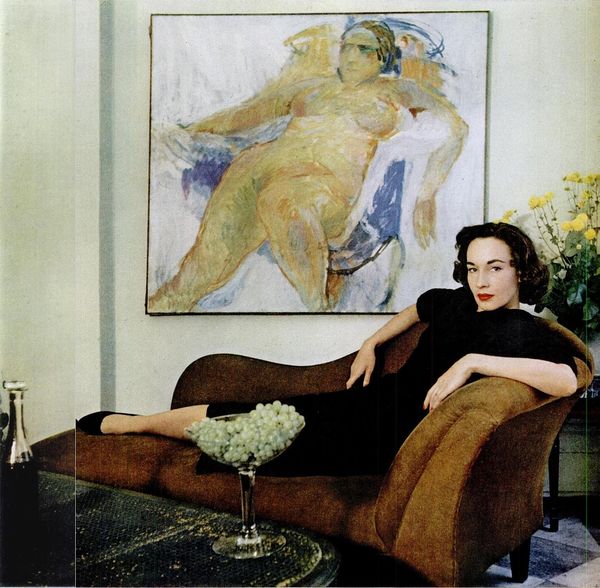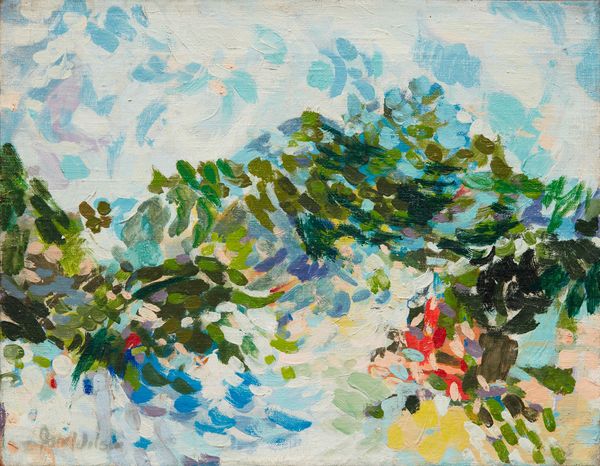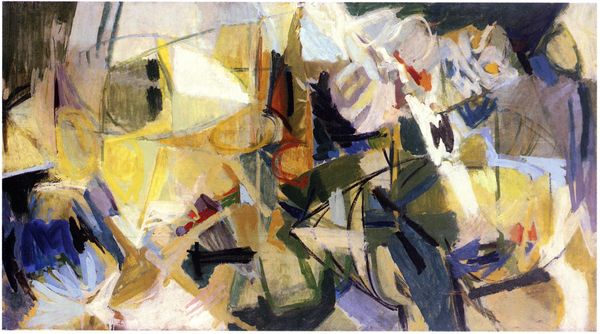New York in the 1950s was a defining era for Jane Wilson and many of her New York artistic counterparts. At the famed Cedar Tavern, Wilson would mingle with her abstract expressionist contemporaries, including the women painters with whom she would later be featured in a 1957 issue of LIFE magazine. For this groundbreaking article titled "Women Artists in Ascendance, Young Group Reflects Lively Virtues of U.S. Painting," Jane Wilson, Joan Mitchell, Grace Hartigan, Nell Blaine and Helen Frankenthaler were photographed in their respective New York City studios.

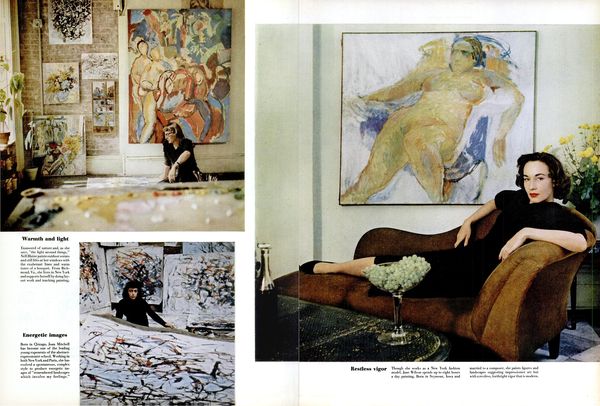
"Women Artists in Ascendance, Young Group Reflects Lively Virtues of U.S. Painting," LIFE Magazine, vol. 42, no. 19, May 13, 1957
Wilson was a member of the legendary Hansa Gallery, the artist cooperative that first held exhibitions on East 12th Street and recognized New York's emerging talent—such as Wilson, Carl Andre, Helen Frankenthaler, Larry Rivers, Jane Freilicher and Fairfield Porter. The Hansa Gallery functioned not only as an exhibition space but also as an arts salon: the gallery supported its members by allowing interesting collaborations between poets and artists and had a publishing house to New York School poets such as John Ashbery, Kenneth Koch and Frank O'Hara. Wilson held three solo exhibitions there throughout the 1950s in addition to exhibiting in the celebrated annual exhibitions at Stable Gallery on West 58th Street, alongside prominent and new talent like Jackson Pollock and Willem de Kooning.
I've never forgotten those...endless vistas of Americana
— Jane Wilson
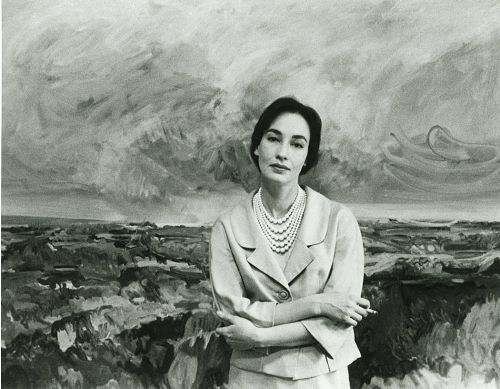
Jane Wilson in 1960, photographed by John Jonas Gruen
At the end of the 1950s, Wilson and her husband, John Gruen—the famed American photographer, art critic, composer, author and art historian—relocated to Water Mill, Long Island, where many of their artist colleagues found fresh sources of inspiration. Wilson joined Tibor de Nagy Gallery, from where the present lot originates.
Blue Mountain Landscape represents the crucial and defining junction between Wilson's earlier abstract still-life paintings, such as Tabletop, 1953, and her critical shift towards what would be become her lifelong pursuit: landscapes and the infinite outdoors. Originally hailing from Iowa, Wilson was raised during the Great Depression that devastated the agricultural communities of the Midwest. Yet she recalls with fondness the vast and sprawling fields: "I've never forgotten those long drives past meadows, farmlands, flatlands and hills, endless vistas of Americana, to the enormous, powerful river, which seemed to lead to the other side of the world...It possessed a great sense of mystery and also a haunting melancholy" (Jane Wilson in Paul Gardner, "Jane Wilson's Weather Eye," ARTnews, 84:10, December 1985).
Above, Jane Wilson Blue Mountain Landscape, 1956, and Tabletop, 1953, demonstrating the artist's move from abstract still-lifes to landscape paintings. Blue Mountain Landscape will be offered in our online auction entitled UNBOUND.
Wilson's development through the genres and styles of still-life painting and abstraction eventually brought her to landscape painting and her dedicated pursuit to capture the endless space of nature, with its transient states of dark and light, on a finite canvas surface.
She sought stillness and the all-encompassing aspects of nature, while intimating the unrelenting sensations of the weather and atmospheric transitions over the horizon.
